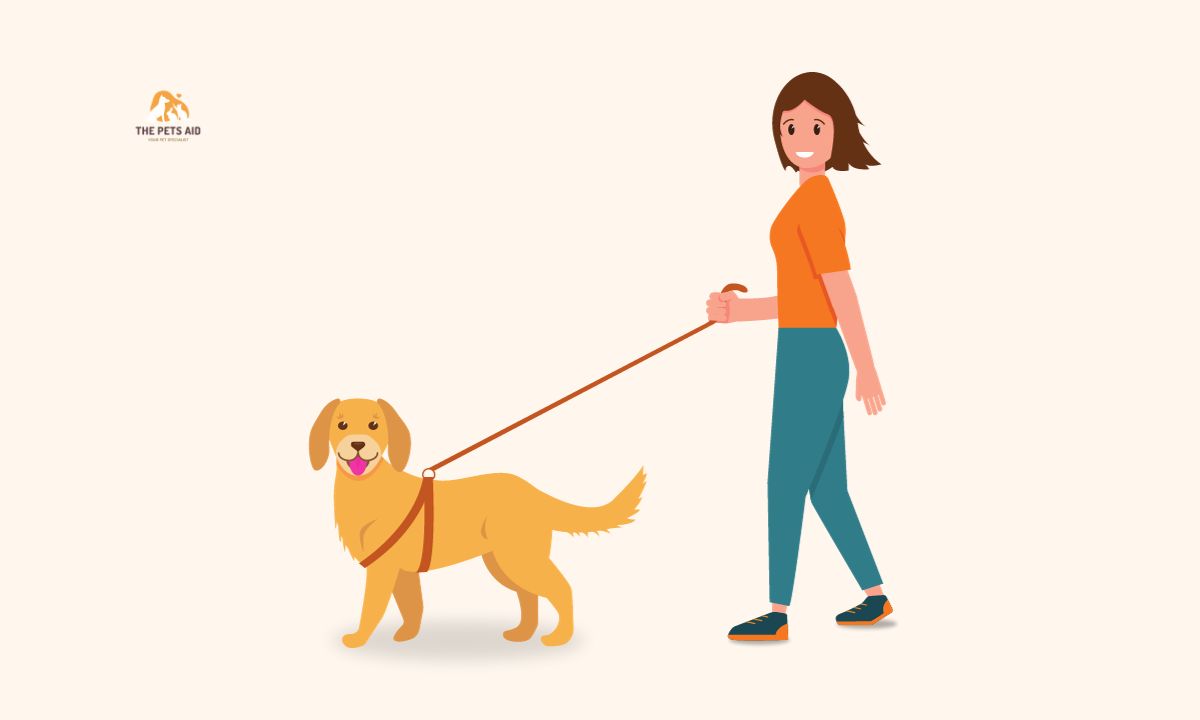So, How Often Should You Walk Your Dog? Walking is an essential part of a dog’s daily routine, offering physical exercise and numerous other benefits. However, determining the ideal frequency and duration of walks can be challenging, as each dog has unique needs that evolve with age.

Highlights:
- Dog walks are essential for physical and mental well-being.
- Puppy walks start after vaccinations and focus on toilet training.
- Adult dogs benefit from varied routes and occasional visits to dog parks.
- Seniors need tailored walks, with adjustments for individual health.
How Often Should You Walk Your Dog?
The frequency of dog walks depends on their age and needs, with puppies requiring short, frequent walks, adult dogs benefitting from two to four walks a day, and senior dogs needing tailored routines.
Here, we’ll explore how often you should walk your dog at different life stages and provide valuable tips to ensure these outings positively impact their well-being.
1. Puppyhood: Early Exploration
- Begin after vaccinations.
- Emphasize toilet training.
- Use positive reinforcement.
- Short, frequent walks.
- Be patient and avoid punishment.
Puppies are full of energy and curiosity, eager to explore the world around them. It’s important to note that they should only venture out into the wider world once they have completed their first vaccination schedule to protect them from harmful pathogens. Until then, you can begin the process of familiarizing your pup with the outside world by taking them in a carrier.
Timing is crucial since a puppy’s first walks coincide with toilet training. Aim for walks just after they wake up, eat, play, or when they appear nervous (which may manifest as excessive sniffing or pacing). Short, frequent trips are recommended during this stage, ideally between three and five times a day.
Positive reinforcement is vital during puppy walks. Offer small treats and encouragement to associate the outdoor world with fun and positivity. Be patient and avoid punishment, as this gradual process can take some time.
2. Adulthood: Maintaining Variation
- Vary walking routes.
- Visit dog parks for socialization.
- Prioritize exercise over commands.
- Include off-leash play.
- End with relaxation exercises.
As your dog transitions into adulthood, walks can become less stimulating. To keep them engaged, occasionally vary your daily route and visit special dog parks.
At the beginning of each walk, allow your dog to do their business without interruption. Avoid giving too many commands or attempting to play tricks right away. Prioritize exercise first.
Dog parks, where they can be off their leash for at least 5 minutes per day, are excellent for physical activity and socialization.
Toward the end of the walk, consider incorporating relaxation exercises to prevent overexcitement or anxiety when returning home. A few minutes of petting and reassurance should suffice. Aim for between two and four walks per day, spaced out evenly during this stage.
The duration should typically range between 20 and 60 minutes, depending on your dog’s breed, activity level, and specific needs.
3. Senior Dogs: Special Considerations
- Consult a vet for guidance.
- Maintain a routine.
- Consider shorter, more frequent walks if needed.
- Allow for necessary restroom breaks.
- Be mindful of comfort and mobility issues.
Older dogs require special attention when it comes to walks. While some may remain active well into their senior years, others may experience mobility issues. It’s crucial to consult your veterinarian for guidance on adapting your dog’s walks to their specific needs.
In general, try to maintain a routine similar to that of the adult stage. However, if you notice problems with urination or signs of pain during walks, opting for shorter but more frequent outings may be necessary.
Older dogs should not be overexerted like puppies and should be allowed to urinate as needed.
Video: How To Train Your Dog to Walk Perfectly!
Final Tips
Now that you have a rough idea of how often your dog should be walked, keep these final tips in mind:
- Allow Freedom: Avoid over-controlling your dog during walks. They should enjoy as much freedom as is responsible, allowing them to explore and interact with their environment.
- Variety is Key: Change the route of your walks regularly, and occasionally let your dog choose the path.
Conclusion
In summary, the frequency and duration of your dog’s walks depend on their age, breed, and individual needs. Adapting their walking routine to different life stages ensures their well-being and happiness. Remember that the key is to provide exercise, socialization, and mental stimulation to keep your furry friend content and healthy. Share your experiences and tips for walking your dog in the comments below.
